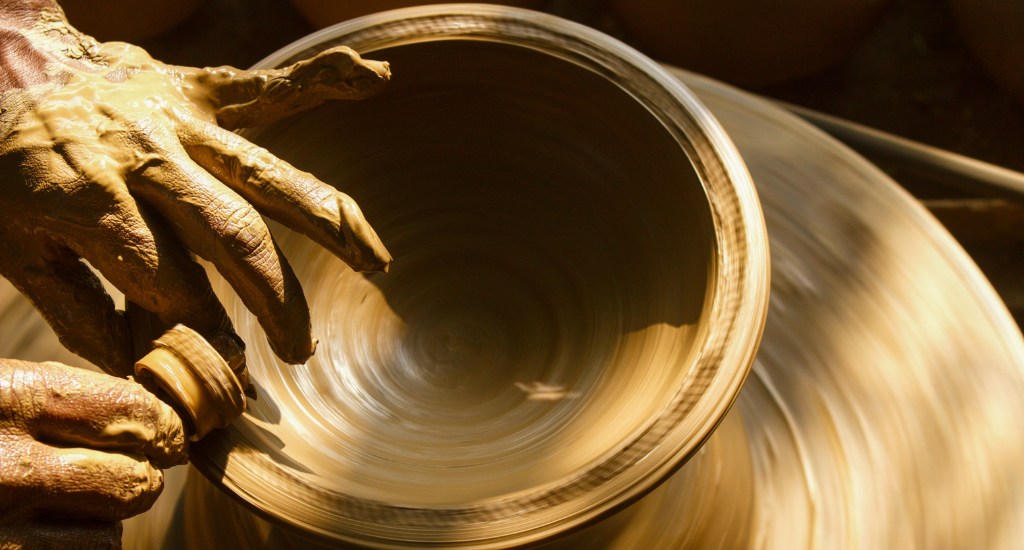
The wheels are turning for migrant potters
Families of potters who have migrated from India’s countryside to Delhi with hopes of making it big are a disappointed lot, but there’s a ray of hope as people are rediscovering uses of earthenware

Families of potters who have migrated from India’s countryside to Delhi with hopes of making it big are a disappointed lot, but there’s a ray of hope as people are rediscovering uses of earthenware
If there is something (or someone) Dharam Raj wants to be thankful for in his business, it is the devil himself. The 18-year-old potter usually struggles to step out of his comfort zone of creating traditional earthenware, but he has realised that his stock of “Ravan” and piggy banks should not run dry.
“People buy such items very often. Ravan’s face is the most sold product for us as people hang it outside their houses to ward off the evil eye,” Raj said.
He however finds it hard to craft other contemporary products, even though he knows that there is a ready market for them, especially among the urban customers of Delhi.
“Traditional pottery is different. We can’t make products with a smooth finish that are popular these days. The soil used in traditional pottery is unique and getting a fine finish with it is not possible,” he added.
People who appreciate the original craft come to us. But not everyone knows the difference between traditional and contemporary pottery
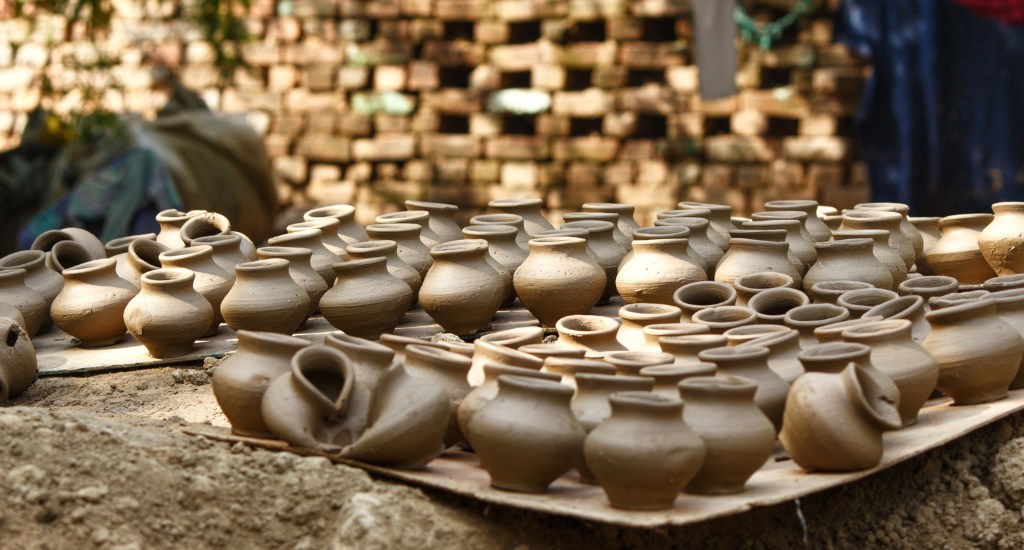
Raj’s concerns find an echo in almost every potter settled in south Delhi’s Maidan Garhi. They love their ancestral profession but wish there was a way to enhance their earnings by using their skill.
A young Tulsi Pandit carried a lot of optimism and little else when he left his village in Bihar’s Nawada district and set out for Delhi in 1998. He came with almost 50 people from six families — all bearing the same hope of a better life, a yearning that draws millions of rural-folk to big cities.
Also Read | “I decided to glamorise pottery”
The group settled in south Delhi’s Maidan Garhi and got enmeshed in the hustle and bustle of life in an urban space where new settlers like Tulsi could be at ease because a large community of potters lived there.
Tulsi is a potter too, as was his father and ancestors.
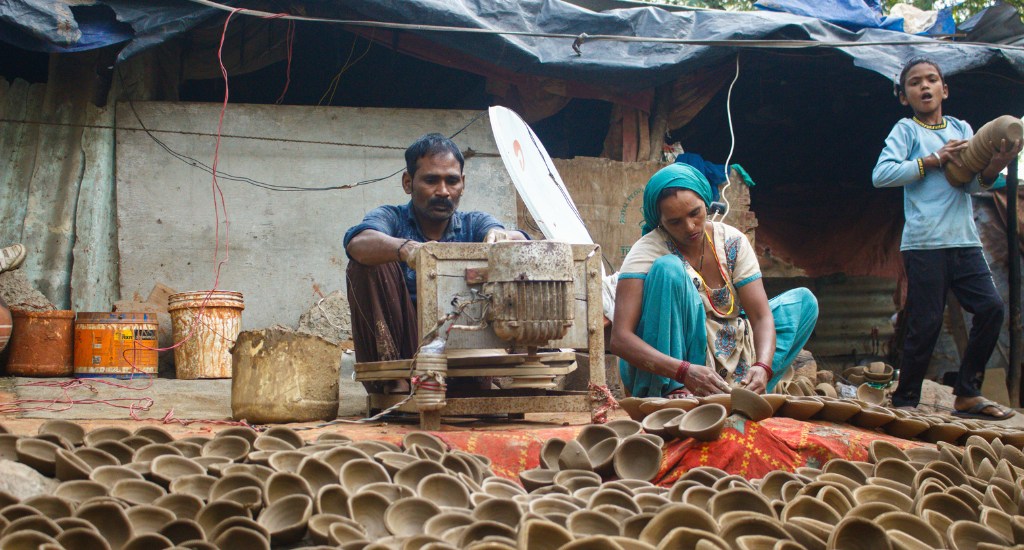
“When I came to Delhi from Bali village, I had dreams. I thought I will have a good life, earn more. But.”
He stopped as he placed a lump of clay on the “chaak”, or the potter’s wheel, and dipped his hands in a tumbler of water.
Thumb rule No 1: The sticky clay doesn’t cling to wet hands.
The middle-aged man plays back in his mind the quarter of a century spent in Delhi that had yielded little. He shudders at the thought of Covid-19. And wonders if he will ever recover from the losses brought on by the pandemic.
“We are staying afloat, earning two meals for the family. But my hopes die each passing day,” he said. “I can’t go back to my village either. I sold my property and spent my life’s savings to save my daughter who had cancer. I couldn’t.”
His pessimism is understandable. Each member of a potter’s household plays a role in the production process. But a family makes hardly Rs 600 from a day’s work. Still, Tulsi remains loyal to his trade.
“I am proud of my profession. Pottery is a gift from my forefathers, although it has cost me dearly,” he said.
The families of Tulsi and others still mix clay and throw it on the potter’s wheels, then leave pots to dry and harden in the sun. They put them in kilns to bake and sell them to… Well, many options are opening up lately.
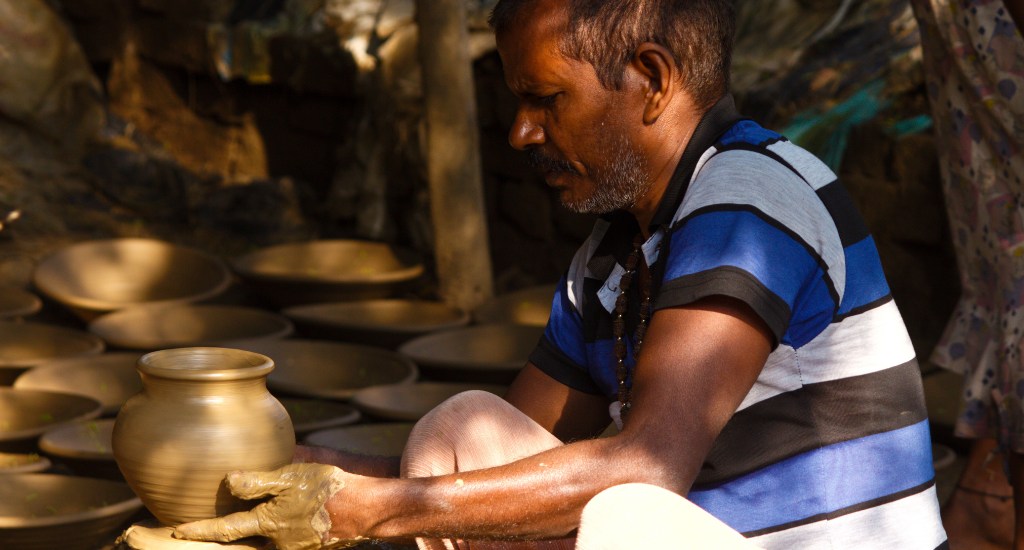
People are rediscovering the health benefits of cooking in earthenware, and eating and drinking from clay plates and cups, called “kulhad”. A ban on single-use plastic cups by the railways has spiked demand for kulhads. Several restaurants are using pottery to cook and serve — a case in point is the Bihari delicacy Champaran handi mutton. The sweet “mishti doi” yogurt comes in clay pots too.
Also Read | Plastic cuts into pottery culture – but not in Manipur
Besides, there are tourists who buy artistic clay pots as souvenirs, and clay lamps, or diyas, are still used in certain religious rituals and festivals. The demand for flower pots has grown too, fuelled by people discovering their green thumb during the pandemic as many took to gardening to keep themselves occupied.
Potters like Sandeep, who is originally from Rewari in Haryana, are adopting technological innovations to carry the craft into the 21st century. He shifted from the traditional chaak to a small, portable wheel that runs on electricity, thereby increasing production with less labour.
“Our income increased after shifting to the power wheel,” Sandeep said.
Pottery is considered the oldest trade in India. Potters are known as ”kumhar” or “kumbhar”, a term that traces its roots to the Sanskrit “kumbhakar” or maker of the “kumbha”, the clay pot. From the Vedic perspective, the “kumbha” is a symbol of fertility, a metaphor for the womb, and is also associated with the goddess of prosperity, Lakshmi.
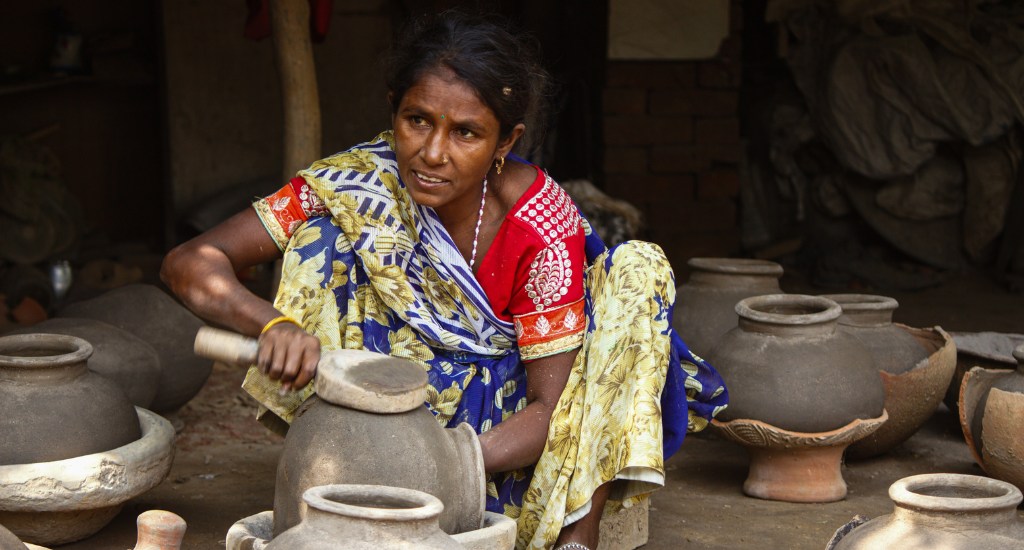
Potters as a group identify themselves as Prajapati—another name for Brahma, the creator god.
In the past, potters would travel far and wide to sell their wares. That practice died out as more durable material replaced clay pots.
“Handmade clay pots could not compete with similar industrial products, made of plastic and metals, in the market. Our merchandise is gathering dust, while people are buying Chinese pots,” Tulsi lamented.
The family of Agra native Om Prakash carries an equally strong resentment towards imported items. He, wife Avantika Devi and their three sons make clay “diyas” and pots. Sales pick up during festivals, especially from Navratri to Diwali in the autumn. But Chinese lamps are eating into their earnings.
It takes two minutes to make a diya, but more than 48 hours to get it ready — drying it in the sun for more than 24 hours, cooking it overnight in a kiln, buffing it to bring out the shine, and sometimes painting it. A diya sells for Rs 10, or even less.
Also Read | Youth revive traditional black pottery of Manipur
The younger generation isn’t interested in this low-returns business, saddled with rocketing prices of raw material. They want to leave one day for better-paying jobs. This saddens Avantika.
“Pottery is our pride. It’s dying slowly. But my husband and I will continue,” she said.
Raj however sees hope in the fact that traditional pottery still has some dedicated customers who travel long distances to buy authentic handmade ware.

“People who appreciate the original craft come to us. But not everyone knows the difference between traditional and contemporary pottery,” he said.
Also Read | A young woman engineer spurs hope for pottery in Kashmir
Raj is now trying to expand his market base by approaching various shops.
“Fewer customers visit our homes now,” he said. “So selling through other outlets is working better, and our earnings have gone up too.”
The lead image at the top shows a potter carefully shaping clay pots (Photo by Pallabi Sen)
Pallabi Sen is a Kolkata-based multimedia journalist, and alumna of Makhanlal Chaturvedi National University of Journalism and Mass Communication.